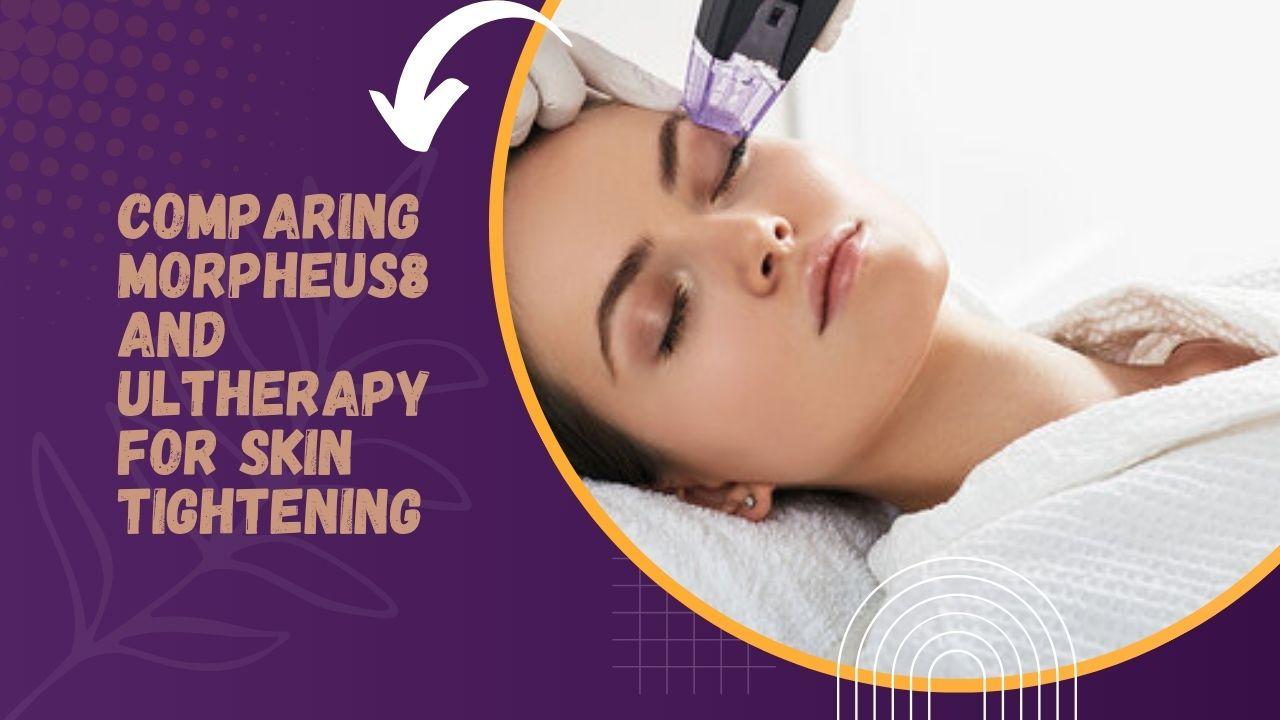Comparing Morpheus8 and Ultherapy for Skin Tightening

As demand for non-surgical skin tightening grows, more people are turning to advanced aesthetic treatments to lift and rejuvenate their skin without the need for surgery. Two standout options in this space are Morpheus8 and Ultherapy, each offering unique technologies and benefits. In this guide comparing Morpheus8 vs Ultherapy, we'll break down how these two popular treatments differ in results, technology, treatment experience, and recovery. Whether you want to tighten loose skin, reduce the appearance of wrinkles, or enhance your skin's overall texture, knowing the main differences between these treatments can help you choose the option that best fits your personal skincare needs.
What Is Morpheus8?
Morpheus8 is an advanced skin rejuvenation treatment that combines microneedling with radiofrequency (RF) energy to tighten, lift, and resurface the skin. The microneedles create micro-injuries that stimulate collagen production, while the RF heat penetrates deep into the dermis to enhance tightening and skin texture. This dual-action approach improves fine lines, wrinkles, acne scars, and overall skin tone. Common treatment areas include the face, neck, and jawline. It's ideal for individuals experiencing mild to moderate skin laxity who want non-surgical results. When comparing Morpheus8 vs Ultherapy, Morpheus8 offers more surface improvement and is effective for various skin types.
What Is Ultherapy?
Ultherapy is a non-invasive treatment designed to tighten and lift the skin using focused ultrasound technology. It works by reaching deep beneath the skin's surface—without any cutting or damage to the outer layer—gently stimulating your natural collagen production over time for a firmer, more youthful appearance. This rejuvenating process firms areas like the neck, brow, and jawline, delivering a subtle, natural lift. It's especially effective for early signs of ageing and mild skin laxity. Ideal candidates are those seeking a non-surgical alternative to a facelift, with moderate sagging or skin looseness. Ultherapy offers gradual, long-lasting results with little to no downtime, making it a popular anti-ageing solution.
Morpheus8 vs Ultherapy: Side-by-Side Comparison
-
Technology Used
Morpheus8: Radiofrequency (RF) + Microneedling
Ultherapy: Focused Ultrasound -
Depth of Penetration
Morpheus8: Up to 4mm (dermal and subdermal layers)
Ultherapy: Up to 4.5mm (SMAS layer) -
Treatment Areas
Morpheus8: Face, neck, body
Ultherapy: Face, neck, décolletage -
Discomfort Level
Morpheus8: Mild to moderate (numbing applied)
Ultherapy: Moderate to high (discomfort during ultrasound) -
Downtime
Morpheus8: 1–3 days
Ultherapy: No downtime -
Sessions Needed
Morpheus8: 2–3 sessions
Ultherapy: 1 session -
Best for Skin Types
Morpheus8: All skin types
Ultherapy: Fair to medium skin tones
Results: What to Expect from Each Treatment
Results vary between treatments. PRP therapy typically shows results within 3–6 months, with hair looking fuller and healthier. However, regular sessions every 4–6 months are needed to maintain results. Hair transplant surgery shows noticeable growth in 6–9 months, with full results in 12–18 months. These results are generally permanent, though maintenance like PRP or medication may enhance longevity. While PRP offers a gradual improvement, transplants deliver more defined, lasting changes. Choosing the right option depends on hair loss severity and patient goals—PRP is ideal for early stages, while transplants suit advanced cases needing restoration. Always consult a specialist first.
Morpheus8 vs Ultherapy: Which Is Right for You?
Morpheus8 and Ultherapy both target skin tightening, but the best choice depends on your unique needs. Morpheus8 combines microneedling with radiofrequency, ideal for improving texture, fine lines, and early sagging—especially in younger patients or those with mild to moderate laxity. Ultherapy uses ultrasound to lift deeper layers, making it great for more advanced sagging and tightening around the jawline or neck. These treatments can complement each other, offering enhanced results when combined strategically. For texture and surface rejuvenation, Morpheus8 excels; for deeper lifting, Ultherapy is more effective. A personalised consultation helps determine the right approach for your skin goals.
Final Thoughts: Choosing the Right Skin Tightening Solution
Choosing between Morpheus8 and Ultherapy depends on your skin goals, downtime preference, and desired results. Each offers unique benefits. For the best outcome, consult a certified expert. Still, deciding between Morpheus8 vs Ultherapy? Please book a consultation at Beverly Hills Med Spa and let our experts guide you.
- Art
- Causes
- Crafts
- Dance
- Drinks
- Film
- Fitness
- Food
- Games
- Gardening
- Health
- Home
- Literature
- Music
- Networking
- Other
- Party
- Religion
- Shopping
- Sports
- Theater
- Wellness



